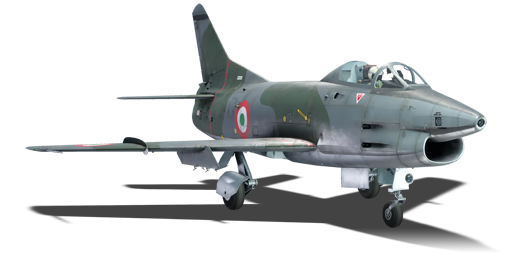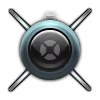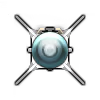



The G.91 was a light subsonic fighter developed by Fiat in the late 1950s, it was a great success being introduced in the Italian, German, and Portuguese air force. The objective of said fighter was to create a cheap, light fighter-bomber capable of becoming the standard between all NATO nations, this was due to the experience of the US and UN forces in the Korean War, and the introduction of more capable jet engines, that pushed the NATO Command to set a competition for this role. A total of 756 aircraft were built in a span of 19 years. The G.91 R/1 was the first light attack/reconnaissance version of the G.91; compared to previous versions, it featured the same armament and powerplant, but added the capability to launch MACLOS guided AA-20 and AS-20 Nord missiles, as well as three cameras mounted on the nose.
It was introduced in Update 1.69 "Regia Aeronautica" along with the initial Italian aviation tree. The G.91 R/1 is a very light and nimble aircraft, it features some decent air-to-air and air-to-ground capabilities, thanks mainly to the AA-20 and AS-20 Nord missiles and its flight performance. For air combat, the AA-20 missiles are very hard to guide, but compensate by being extremely good in last minute launches in head-ons, in situations when the enemy can't properly dodge, they are also a very good way of destroying bombers without getting too close or from awkward angles. The G.91's ground ordnance consists of AS-20 missiles as well as rockets, the AS-20 Nords are the best option and can reliably destroy most targets, but they require good aim to be used.
flaps
flaps
flaps
brake
| Name | Weight | Slot | ||||
|---|---|---|---|---|---|---|
| 19 × | 233.7 kg |  |  | |||
| 143.8 kg |  |  | ||||
| 133 kg |  |  | ||||
| 242.6 kg |  |  | ||||
| 253 kg |  |  | ||||
| 2 × | 83.9 kg |  |  | |||












Flight performance | |
|---|---|
Survivability |
|---|
Weaponry | ||
|---|---|---|